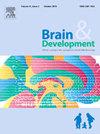MECP2重复综合征:病理生理学和治疗前景的最新进展
IF 1.3
4区 医学
Q4 CLINICAL NEUROLOGY
引用次数: 0
摘要
MECP2重复综合征(MECP2 duplication syndrome, MDS)是一种由MECP2基因重复或额外拷贝引起的x连锁神经发育障碍。它主要影响男性,其特征是智力残疾、张力低下、癫痫、复发性感染和自闭症特征。MeCP2编码的甲基cpg结合蛋白2 (MeCP2)是脑功能的重要表观遗传调控因子。在大脑发育和成熟过程中,表达水平受到严格调控,表达水平的改变会导致严重的神经发育障碍;过量会导致MDS,而不足会导致Rett综合征。本文就MDS的病理生理、临床特征、疾病模型和治疗策略等方面的最新进展进行综述。利用动物和患者衍生的诱导多能干细胞(iPSCs)衍生的神经元模型的研究进展,为MDS相关的分子和细胞异常提供了见解,并促进了治疗开发。在新兴的治疗方法中,反义寡核苷酸(ASO)治疗作为一种有前途的选择性抑制MeCP2过表达的方法受到了极大的关注。使用MDS小鼠模型和ipscs衍生的神经元进行的临床前研究表明,ASO治疗可以部分恢复神经元异常,目前正在进行临床试验。本文章由计算机程序翻译,如有差异,请以英文原文为准。
MECP2 duplication syndrome: Recent advances in pathophysiology and therapeutic perspectives
MECP2 duplication syndrome (MDS) is an X-linked neurodevelopmental disorder caused by duplication or extra copies of MECP2 gene. It primarily affects males and is characterized by intellectual disability, hypotonia, epilepsy, recurrent infections, and autistic features. Methyl-CpG binding protein 2 (MeCP2) encoded by MECP2 is a crucial epigenetic regulator of brain function. Expression levels are strictly regulated during brain development and maturation, and altered levels lead to severe neurodevelopmental disorders; excessive levels are associated with MDS, while insufficient levels cause Rett syndrome. This review provides a comprehensive overview of the recent advances in the pathophysiology and therapeutic perspectives of MDS, focusing on its pathophysiology, clinical features, disease models, and therapeutic strategies. Advances in studies using animal and patient-derived induced pluripotent stem cells (iPSCs)-derived neuronal models have provided insights into the molecular and cellular abnormalities associated with MDS and have facilitated therapeutic development. Among the emerging treatments, antisense oligonucleotide (ASO) therapy has gained significant attention as a promising approach for selectively suppressing MeCP2 overexpression. Preclinical studies using MDS mouse models and iPSCs-derived neurons have demonstrated that ASO treatment can partially restore neuronal abnormalities and clinical trials are currently underway.
求助全文
通过发布文献求助,成功后即可免费获取论文全文。
去求助
来源期刊

Brain & Development
医学-临床神经学
CiteScore
3.60
自引率
0.00%
发文量
153
审稿时长
50 days
期刊介绍:
Brain and Development (ISSN 0387-7604) is the Official Journal of the Japanese Society of Child Neurology, and is aimed to promote clinical child neurology and developmental neuroscience.
The journal is devoted to publishing Review Articles, Full Length Original Papers, Case Reports and Letters to the Editor in the field of Child Neurology and related sciences. Proceedings of meetings, and professional announcements will be published at the Editor''s discretion. Letters concerning articles published in Brain and Development and other relevant issues are also welcome.
 求助内容:
求助内容: 应助结果提醒方式:
应助结果提醒方式:


